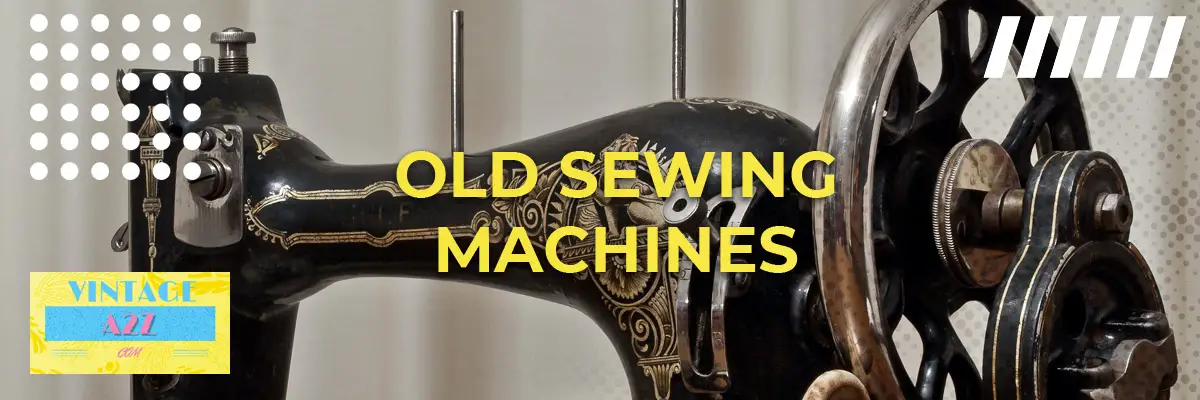Rust is a reddish-brown oxide formed by the reaction of iron and oxygen in the presence of water. Water or moisture acts as a catalyst. Unfortunately, it can form on your beloved vintage Singer sewing machines, as they are built all metallic and designed to last a lifetime.
To get rid of rust on your vintage sewing machine, you can use kerosene or a commercial degreaser. However, the devil is clearly in the details, so proceed with caution.
Vintage Singer sewing machines are at least forty years old! Lasting all those decades, rusting becomes inevitable. Many avid sewing enthusiasts value things of old. There is that feel and beauty of simplistic mechanical engineering unmatched by modern sewing machines’ computerized counterparts. The gearing, needle, and bobbin movement, whether hand-cranked or treadle, all have an unmatched therapeutical feel. Unfortunately, rust does not feel the same way.
To best treat your vintage Singer sewing machine suffering from rust problems, you will need kerosene or commercial degreaser, as well as a dremel, wire brush, soft brush, and sandpaper.
Start with a spot test
Vintage Singer sewing machines have a protective coating that protects the decals from damage. So, it is good to check whether the external paint will react to the cleansing agent. You need to do a spot test on an inconspicuous part of the sewing machine to see how it reacts.
Use a cotton swab to apply the cleansing agent on the spot. It is hard to repaint a Singer sewing machine back to its original color, so caution is advisable. If all is good, generally clean the sewing machine to clear off excess dirt and dust before proceeding to the more thorough rust removal.
Cleaning the external parts
You want to start with the external parts of your Singer sewing machine first. This includes features like the faceplate, needle, and hand-crank that are visible on the sewing machine.
Detachables like the faceplate should be detached, and the areas underneath cleaned first. Clean the faceplate with sandpaper first, be careful not to use too much force, so you don’t leave scratches. You can then soak the faceplate in the degreasing agent for a while to get rid of the stubborn rust. Once clean and dried, use the dremel or a buffing wheel to restore its shine.
Using a microfiber cloth or a brush, wipe the cleansing agent evenly over the other exposed external parts, letting it settle for a while. Be careful while using the cleansing agent, as it can strip the black finishing of the vintage sewing machine. This is the reason why the spot test was crucial in the first place.
For treadle machines, wipe off the excess rust with sandpaper and wipe with the degreasing agent.
Cleaning the inside of the machine
The internal part of your vintage Singer sewing machine is trickier to clean, as that means you have to take apart the sewing machine. Hopefully you have been oiling the machine regularly since rust tends to fuse and cause metallic parts to stick together.
Singer sewing machines are built to last. Using sandpaper, remove any excess rust. Proceed to use a wire brush or dremel if possible, to clean stubborn rust. If any parts are fused together, soak them in the cleansing agent first for a while to help them detach.
Note, if your machine is an electrical version, remove all the electrical parts first. Try as much as possible to avoid soaking in the cleansing agent as that will damage the black enamel paint and decorative decals.
Finishing touches
Your vintage sewing machine should now look all shiny and new. Finish cleaning off with a careful reassembly of the parts while applying sewing machine oil for maintenance. For electric versions, dry the electrical features first, well before reattaching to avoid electrical shocks. Reattach the electric parts back to the system.
Remember, new parts for vintage sewing machine parts are not only rare, but also very expensive. Therefore, extreme care is advisable. Once everything is back in place, polish your sewing machine using a dremel with the correct brush attachment. A power drill can do a similar job. You can also use a soft sand sponge.
Frequently Asked Questions
Is white vinegar a good degreasing agent?
White vinegar is a versatile liquid with countless household applications from cooking to cleaning. It even has medicinal values. It contains acetic acid, which makes it a good oxidant and cleaning agent. However, it is not the most effective in dealing with rust. It is not recommendable for heavy rust removal. For effective results, go commercial and find a proper commercial degreasing agent from local stores.
How do I prevent my vintage Singer sewing machine from rusting?
The only secret to keeping your Singer in good shape is proper maintenance. Regularly apply lubricant or sewing machine oil to the moving parts like the gears, hand crank, and treadle. Vintage sewing machines’ metallic parts are made of iron, which means they are prone to rust. The best way to maintain them is through regular oiling and servicing. It is advisable to seek the services of a repair professional for an expert opinion sometimes, to check the machine is in top-notch condition.
How do I clean rust from the hard-to-reach internal parts of my sewing machine?
Some parts will be hard to reach and you can use a wire brush to get into those regions. If you are worried about damage, get a professional to help you clean your vintage sewing machine. Professionals might be costly, but they will save the cost of repair and parts if you damage the machine trying to clean it yourself. Vintage sewing machine parts are rare and expensive.
Taking care of your machine is the key to avoiding rust
Vintage Singer sewing machines are works of art that have been around for decades. They are part of rich history and require proper maintenance for future generations to marvel and appreciate.
According to the International Sewing Machine Collector’s Society (ISMACS), vintage Singer sewing machines in good condition are valuable sought-after gems, so treasure that artifact.
Clean your machine regularly with soap and water (do not use alcohol-based soaps), add oil to the moving mechanical parts, and check the condition of the finish, keeping it as new and possible. Consider waxing, if possible, to buff its appearance. Finally, do not forget to clean the accessories such as the wooden cabinet and its various compartments. They are also a part of the sewing machine.

